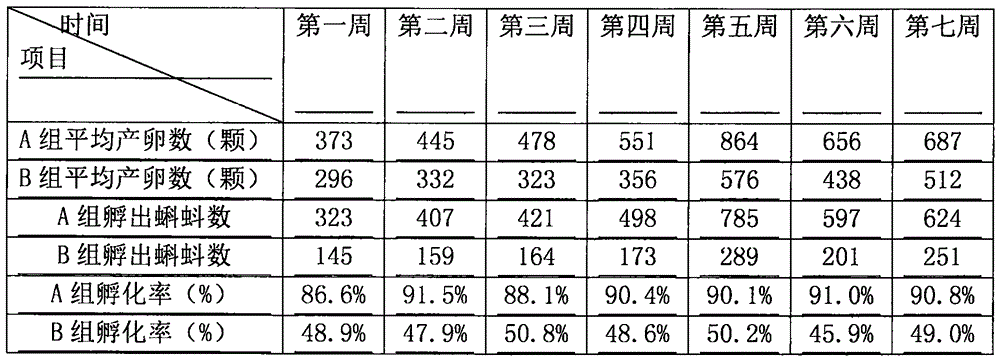Ecological collection method of giant spiny frog eggs
A collection method and technology of frog chestnut, applied in the field of aquaculture, can solve the problems of insufficient selection, cumbersome operation, low yield, etc., and achieve the effects of increasing the natural hatching rate, reducing the loss rate of frog eggs, and high fertilization rate.
- Summary
- Abstract
- Description
- Claims
- Application Information
AI Technical Summary
Problems solved by technology
Method used
Image
Examples
Embodiment 1
[0024] The ecological collection method of embodiment 1 spinosa spinosa frog ovum
[0025] A kind of ecological collection method of spinosa spinosa frog ovum is as follows: put some frog ovum collecting boards into the spawning tank of the frog pond, the interval between adjacent frog ovum collecting boards is 5-15cm; , take out the frog egg collection plate with attached eggs, and collect them.
[0026] The structure of described frog pond is: be rectangular pond (long 5 meters, wide 4 meters, high 1.6 meters), as figure 1 As shown, the pool wall 1 is provided with a water inlet 2 and a water outlet 3 (in the vertical direction, the water inlet 2 is 10 cm higher than the water outlet 3); in the pool, a spawning tank with a depth of 25 cm and a width of 40 cm is provided around the pool wall 1 4. The area surrounded by the spawning water tank 4 is the frog living area, and the frog living area is provided with some bosses 5 (as a rest platform for planting frogs), and a ditc...
PUM
| Property | Measurement | Unit |
|---|---|---|
| Apparent density | aaaaa | aaaaa |
| Dimensional shrinkage | aaaaa | aaaaa |
Abstract
Description
Claims
Application Information
 Login to view more
Login to view more - R&D Engineer
- R&D Manager
- IP Professional
- Industry Leading Data Capabilities
- Powerful AI technology
- Patent DNA Extraction
Browse by: Latest US Patents, China's latest patents, Technical Efficacy Thesaurus, Application Domain, Technology Topic.
© 2024 PatSnap. All rights reserved.Legal|Privacy policy|Modern Slavery Act Transparency Statement|Sitemap


